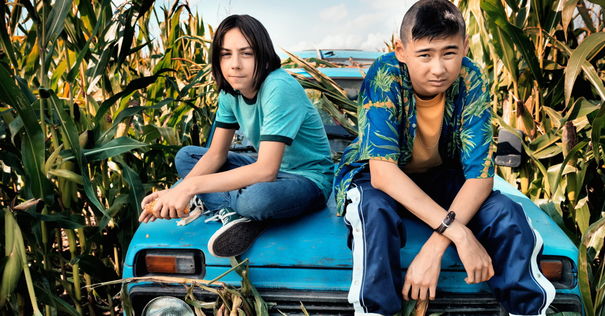Nonexistent Destination: TSCHICK
By Hammurabi Hernández

Still from Fatih Akin's TSCHICK
Known for addressing Eastern European cultural conflicts in his films, it is surprising that Turkish-German director Fatih Akin decided in his latest feature film to adapt "Why We Took the Car" by German Wolfgang Herndorf, a novel for young adults. It seems a suspicious decision, but in TSCHICK the insolence and indomitable spirit that characterizes it is fully observed. Akin traces an explosive and irrational film guided by the pain of a teenager named Maik, who feels invisible and finds it impossible to understand the rejection of a girl and the emotional abandonment of their parents.
Although TSCHICK has a protagonist that responds to the archetype of a white and shy teenager, attention is drawn to the friend he meets and whose nickname is referred to in the title of the film. He is a boy of Mongolian traits and Russian name that identifies himself as a Jewish gypsy, contradictions that make his identity untraceable and his story a mystery for the spectator. He is a fun character due to his strange behavior and alleged brashness, but he allows us to deal lightly with a multicultural Germany, a group of migrants that during the process of integration to the country lose their background and can only be perceived as threats.
This friendship becomes a road movie, a journey undertaken by Maik and Tschick in Berlin to a seemingly nonexistent destination, rashly traveling on a stolen car. This journey advances precipitously due to the decision of the characters to never drive back, even faced with closed roads or the threat of the police, which fosters multiple curious and absurd situations. They meet Isa, a girl a few years older that lives in an indigent condition but who confesses her intention of traveling to Prague to return with her family. Although the character of Isa insinuates a sexual awakening in Maik, their relationship becomes anticlimactic due to the boy’s naivety, which is in tune with that premature condition that lives as an adolescent.
While TSCHICK’s story relies on certain narratives conventions and juvenile literature schematisms, Akin permeates the film with a vitality that can be of interest to young audiences. The camaraderie between Maik and Tschick is at times childlike but breathes a certain air of freedom, a certain promise of rebellion before the hesitant future of a generation. It is a nondescript story that finds support and frankness in the authorial weight of a filmmaker like Fatih Akin.

